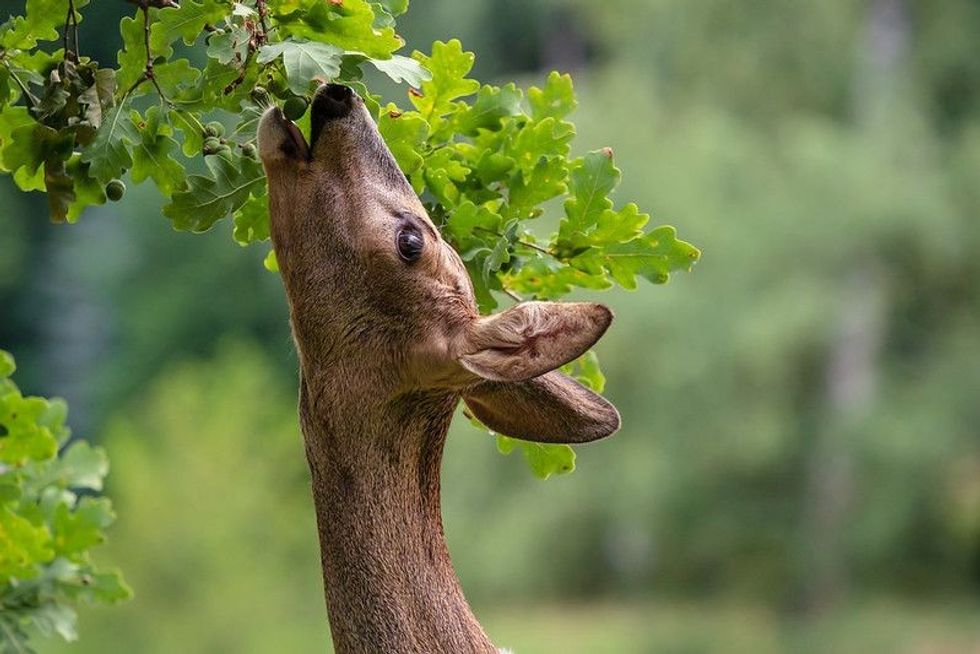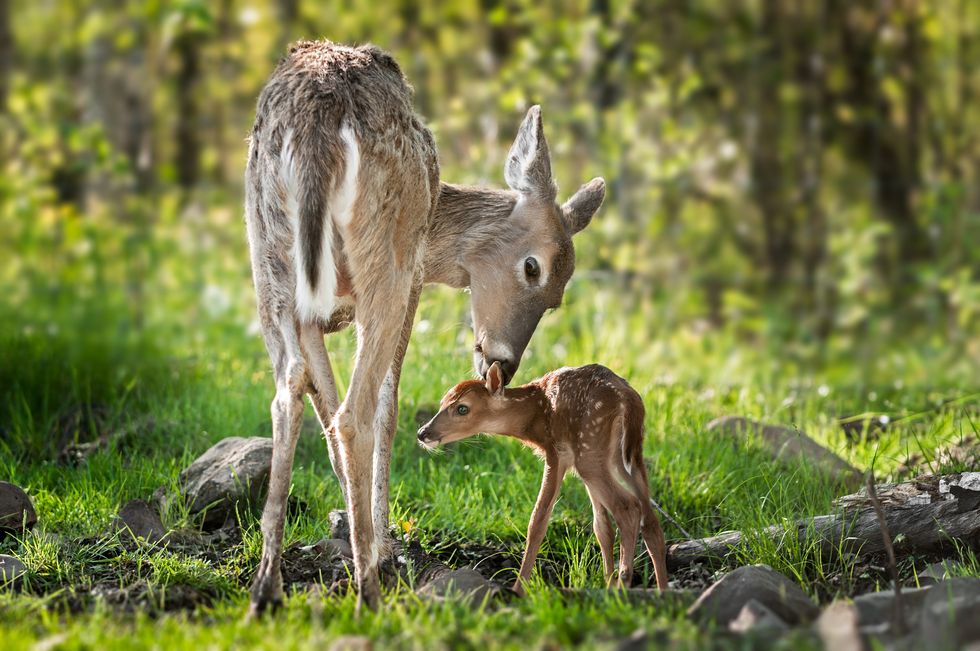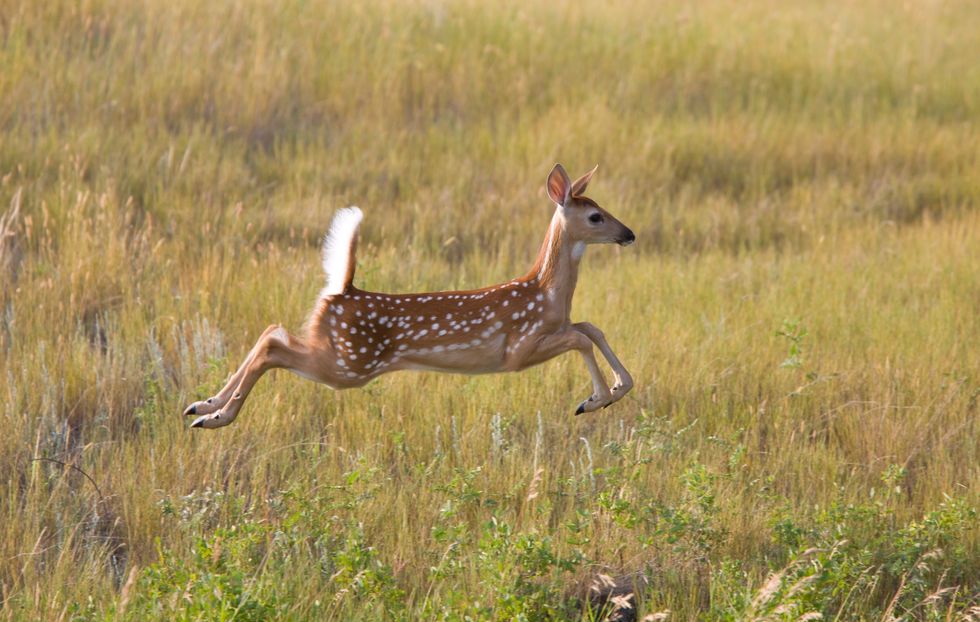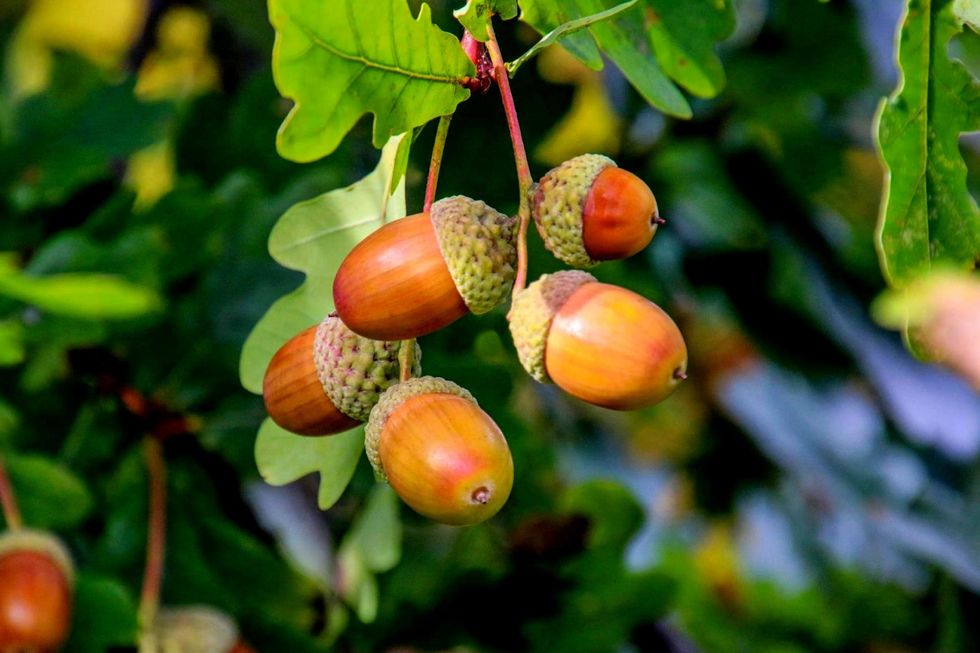Deer and acorns go together like peanut butter and jelly! Acorns come from all sorts of oak trees, like white oaks, red oaks, and even live oaks. Like people, deer have their favorites; some acorns taste sweeter, while others are kind of bitter and only get eaten if there's nothing else around.
When acorns are everywhere, it totally changes how deer act. If they can find plenty to eat, they don't need to wander around as much, and their herds tend to stay healthy and strong. But when acorns are hard to find, deer might get weaker and have fewer babies.
People who own land or just love wildlife can help deer by taking care of oak forests and maybe planting this special food just for them. This keeps things balanced in nature and guarantees that deer have what they need to thrive. See? Everything in the wild is connected, and acorns play a big part in keeping deer populations healthy!
Which deer species eat acorns?
 Shutterstock
ShutterstockMany deer species, including white-tailed deer, mule deer, and black-tailed deer, depend on acorns as a significant food source. Below is a summary of the different deer species known to eat acorns and their potential preferences.
- White-tailed deer, common in North America, rely heavily on acorns as a food source, especially during the fall and winter.
- Mule deer, found in western North America, include acorns in their diet, along with various other foods available in their habitat.
- Black-tailed deer, a subspecies of mule deer residing in the Pacific Northwest, also consume acorns from oak trees.
- European roe deer, while not as dependent on acorns as North American deer, will consume them when they are available.
- Red deer, found across Europe, Asia, and North Africa, incorporate acorns into their diet in regions where oak trees grow.
- Sika deer, native to East Asia but introduced to other areas, consume acorns, particularly in habitats managed by humans.
- Fallow deer have a diverse diet and will consume acorns where oak trees are common, such as in European forests.
- Axis deer (chital) include acorns as part of their diet, especially in introduced habitats where oaks are found.
- Sambar deer, native to parts of Asia, will consume acorns if they live in areas with oak trees.
- Barasingha (swamp deer), primarily wetland dwellers, may include acorns in their diet when found near oak trees.
Oak Species And Their Acorns
 Shutterstock
ShutterstockOak trees come in many varieties, each producing acorns with distinct characteristics. This part of the article will cover the different oak species, such as white oaks, red oaks, and live oaks, and the unique properties of their acorns.
- White oaks produce sweet-tasting acorns with low levels of bitter tannins, making them a favorite food for deer.
- Red oak acorns have higher tannin levels, making them taste more bitter. Deer typically eat them after white oak acorns have been exhausted.
- Live oaks, found in the Southern United States, produce acorns that are an important food source for deer in those regions.
- Black oak acorns are also high in bitter tannins, but deer will eat them, especially when preferred white oak acorns are not available.
- Pin oak acorns have lower tannin levels compared to other red oaks, making them taste better and more palatable for deer.
- Burr oaks produce large acorns with a fringed cap that are a valuable food source for deer because of their size and nutrition.
- Swamp chestnut oaks offer large, sweet acorns that deer highly favor, especially in the Southeastern United States.
- Scarlet oak acorns are somewhat bitter due to their tannins, but deer will still eat them when other options are scarce.
- Chinkapin oaks are known for their small, sweet acorns that are eaten by deer and other wildlife.
- Willow oaks produce small acorns that are an important food source for deer, especially in wetter habitats where these trees thrive.
Acorn Availability And Deer Behavior
 Shutterstock
ShutterstockThe amount of acorn available, whether abundant or scarce, can greatly influence deer behavior, including how far they travel and where they choose to feed. This section explores how acorn availability impacts deer and the overall health of their populations.
- When acorns are plentiful, deer don't roam as far because they spend more time eating in areas densely populated with oak trees producing acorns.
- However, during years when acorns are in short supply, deer expand their search for food over a wider territory. This makes them more visible in open areas and food plots as they roam about.
- Deer populations tend to be healthier, with higher body weights and better reproductive rates, in abundant acorn years.
- Deer have preferences for certain oak species based on the taste and nutrients found in those acorns, which guides where they search for food.
- Since different oak varieties drop acorns at different times, this influences the timing and locations of deer feeding patterns throughout the fall and winter.
- Deer may alter their typical resting areas to remain close to abundant acorn sources, changing their daily movement routines.
- In regions with different oak species, deer systematically consume different acorn types as each variety becomes available, beginning with the preferred white oak acorns.
- When acorns are scarce, deer may venture into suburban neighborhoods while searching for food sources, increasing interactions with humans.
- The presence of fallen acorns significantly reduces deer activity in managed food plots and agricultural fields.
- Deer rely on their keen sense of smell to detect acorns buried under leaf litter, highlighting the importance of acorns in their foraging behaviors.
Managing Habitat For Acorn Production

Landowners and wildlife managers can use strategies to help oak trees grow and produce more acorns, ensuring a reliable food source for deer. This part discusses habitat management techniques, like planting new oak trees and caring for existing ones.
- Planting different types of oaks means acorns are available throughout the year, keeping deer populations healthy.
- Clearing away plants that compete with oaks for sunlight helps them make more acorns.
- Controlled burns can help new oak trees thrive by reducing competition from other plants.
- Fencing young oak saplings protects them from damage, allowing them to grow into strong, acorn-producing trees.
- Adding nutrients to the soil, based on soil tests, can improve oak tree health and boost acorn production.
- When harvesting wood, leaving healthy oaks that produce lots of acorns helps maintain good deer habitat.
- Creating open areas at the forest's edge encourages new oak seedlings to grow.
- Having a mix of young and old oak trees ensures that some are always producing lots of acorns.
- Building small ponds or wetlands supports special oaks that grow in wet areas, providing valuable acorns for deer.
- Long-term forest planning that focuses on oak trees ensures deer will have acorns for many years to come.
Nutritional Value Of Acorns For Deer
Acorns provide deer with essential nutrients, making them a valuable part of their diet. This section will explore how acorns help deer stay healthy and strong.
- Acorns are packed with fats and carbohydrates, giving deer the energy they need to store fat for the winter months.
- While acorns don't have a ton of protein, they do have enough to help young deer grow.
- Acorns contain important minerals like calcium, phosphorus, and potassium, which help deer keep their bones strong and their bodies working properly.
- Acorns even contain some vitamin B3, which helps deer get the most out of their food.
- The fats in acorns are especially important for pregnant deer, helping their babies grow healthy before they are born.
- Deer species prefer the taste of white oak acorns because they are easier to digest and give them a quick energy boost. Red oak acorns are still nutritious, just a little different.
- Eating different kinds of acorns helps deer get various nutrients, which is important for their overall health.
- During tough winters, the fat reserves deer build up by eating acorns can help them survive.
- When deer have plenty of acorns to eat, bucks can grow larger antlers.
- When acorns are plentiful, deer are healthier overall, and their breeding seasons tend to be more predictable.
FAQs
How can I attract deer to my property using water oak acorns?
To attract deer with water oak acorns, ensure that your property has a healthy population of water oak trees. These trees produce acorns that deer love, especially when there are no white oak acorns. Regularly clearing the underbrush around water oaks can make the acorns more accessible to deer.
Can the presence of acorns influence deer movement and behavior?
Yes, the presence of acorns can greatly influence deer movement and behavior. When acorns are abundant, deer tend to reduce their range of movement and spend more time in areas with high acorn density.
This can lead to deer being less visible in open areas and more concentrated in oak forests. Also, when acorns are scarce, deer will roam more widely in search of food, which can increase their visibility.
How can landowners manage habitats for better acorn production?
Landowners can manage habitats for better acorn production by planting different oak species, including water oak, to ensure a consistent food source for deer. They can also use selective thinning to reduce competition, use prescribed burns to promote oak regeneration, and protect young saplings from browsing.
How does the nutritional value of acorns impact deer health during the winter?
The nutritional value of acorns helps support deer health during the harsh winter months. Acorns are rich in fats, which are essential for deer to build and maintain fat reserves that act as heat sources during cold weather. These reserves are crucial for survival, as they help deer withstand the winter when other food sources are scarce.
What other types of trees do deer commonly feed on besides oaks?
Deer have a diverse diet that includes various natural food sources beyond acorns. They feed on approximately 600-700 plant species, including fruits from apple, pear, and persimmon trees, as well as the leaves and twigs of maple, elm, and honey locust trees.
The relationship between deer and acorns shows how beautifully different parts of nature work together. If you understand what deer eat and how important acorns are, you can help create a healthier environment for everyone.
Knowing and appreciating the role of acorns in a deer's diet promotes a deeper connection to the natural world. It's a reminder that even something as small as an acorn can have a big impact.
By taking care of this important food source, everyone can contribute to the well-being of deer and help keep the whole ecosystem in balance.
Related Articles Around the Web




 Shutterstock
Shutterstock Shutterstock
Shutterstock Shutterstock
Shutterstock





